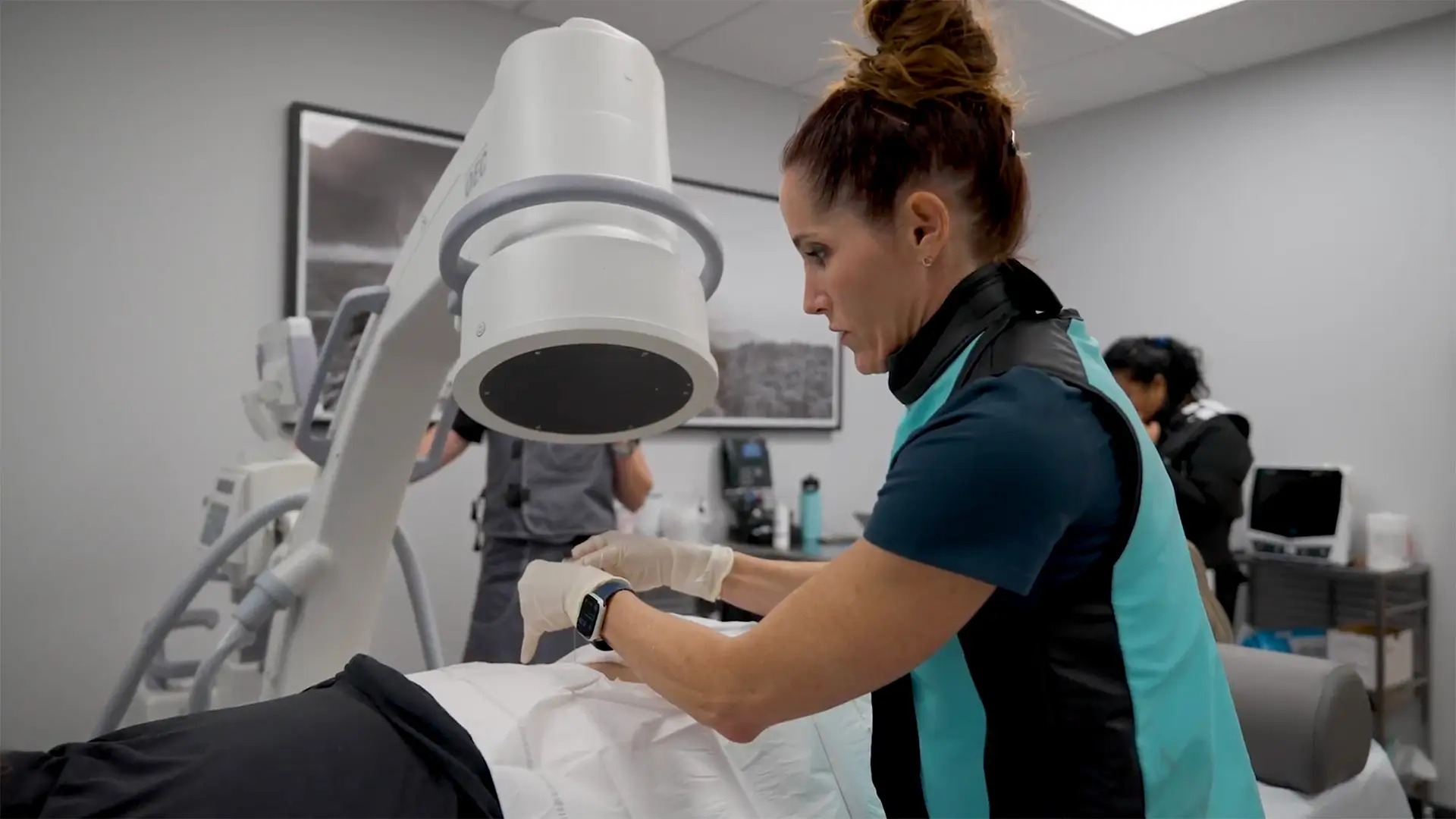
A Physiatrist’s Perspective: Rethinking Spine and Musculoskeletal Care Without Opioids
Dr. Susan Sorosky is a leading physiatrist and co-founder of Desert Spine and Sports Physicians, where she and her team specialize in non-operative spine and musculoskeletal care. The team of physical medicine and rehabilitation physicians and pain management specialists offers comprehensive treatment plans. These include the delivery of targeted, image-guided treatments to help patients relieve pain and restore function—without opioids.
In a recent live Instagram interview with Scottsdale physical therapist Dan Swincoe, owner of Train2Win, Dr. Sorosky shared insights into some of their regenerative treatments, like platelet-rich plasma (PRP) and bone marrow aspirate concentrate (BMAC), also known as stem cell therapy.
Their live conversation explored how these minimally invasive techniques are helping patients with spine and musculoskeletal pain and injury heal naturally and stay active—without relying on potentially harmful medications or surgery.
Moving Beyond Opioids and Steroids
For years, opioids were considered the solution for chronic spine and musculoskeletal pain, often leading to long-term dependence without addressing the root causes. The overprescription of opioids even contributed to a national opioid crisis, trapping many patients in a cycle of pain and medication. In addition, steroid injections were the go-to for the management of these conditions, but often functioned like a band-aid with short-term pain relief.
As she shares in the interview, “When we started our practice, interventional options were limited. We used steroid injections… and while they were and are still helpful in some cases, they were overplayed. Then regenerative medicine with PRP burst onto the scene about 15 years ago, and this has become very mainstream today. With PRP, it’s really exciting to be able to do something that’s actually fixing things rather than just masking the problem.”
Rather than merely managing symptoms, Dr. Sorosky and her team focus on function and long-term recovery. They do this by utilizing precise, image-guided interventions, physical rehabilitation, and regenerative therapies to target the root cause without narcotics or surgery.
As Dr. Sorosky shares, “Day to day, we manage pain and injury from the spine and musculoskeletal system with everything but surgery!”
Advancing Regenerative Medicine with Non-Surgical Solutions
To support a more holistic, whole-person care model, Desert Spine and Sports Physicians offers advanced biologic treatments, like platelet-rich plasma and bone marrow aspirate concentrate, based on the overwhelmingly positive findings in the clinical data. These therapies can effectively treat patients with arthritis, tendon injuries, labral or meniscus tears, disc-related pain, sciatica /radiculopathy and various other structural injuries requiring enhanced tissue healing.
“There are currently over 150 randomized controlled studies—the gold standard studies in our field—that show that PRP outperforms steroids… It can be really transformative,” Dr. Sorosky explains.
The Future of Spine Care: Less Surgery, More Precision
Modern spine care is entering a new era—one defined not by bigger surgeries, but by smaller, smarter interventions. Just as laparoscopy transformed general surgery, today’s regenerative and image-guided techniques reshape how non-operative spine specialists approach pain and injury.
Desert Spine and Sports Physicians is at the forefront of this evolution, where needle-based procedures—like PRP and BMAC—are replacing traditional surgical solutions for many patients.
By targeting the exact source of pain through precision-guided techniques, Desert Spine and Sports Physicians helps patients heal faster, avoid complications, and reduce the overall cost of care. And as the field continues to advance, the future of spine medicine is clear: fewer incisions, more impact, and a greater emphasis on preserving tissue, restoring function, and keeping patients out of the operating room.
Respectful Collaboration With Surgeons
While both non-operative physicians and surgeons complete medical school, their post-graduate training diverges significantly. Surgeons pursue surgical residencies focused on operative techniques, while physicians—like those at Desert Spine and Sports Physicians—complete residencies in Physical Medicine and Rehabilitation (PM&R), followed by subspecialty fellowships in non-surgical, interventional spine and musculoskeletal care.
In cases where surgery is necessary, Desert Spine and Sports Physicians maintains clear clinical boundaries and refers patients appropriately. However, for cases where non-operative care is an ideal approach, Dr. Sorosky has previously shared: “I say to the primary care team, ‘You have the responsibility for taking care of the internal workings of the body, but we specialize in the external—the spine and musculoskeletal system. Send us your patients and we will take the time to take a history, do a complete musculoskeletal exam, and order and interpret imaging so we can make an accurate diagnosis and provide a comprehensive treatment plan. That’s what we do! ‘”
Leading with a Patient-First Growth Strategy
Dr. Susan Sorosky’s conversation with Dan Swincoe highlights a thoughtful approach to care at Desert Spine and Sports Physicians. Rather than masking pain with opioids, the focus is on precise treatment of the source using biologic therapies that promote healing, restore function, and help patients regain control of their lives—without surgery or narcotics.
And this commitment extends beyond the treatment room. Their patient-first growth strategy includes transparent communication about cash-based pricing, ongoing educational outreach, and integrating new digital tools to help patients and referring providers make informed, confident decisions about care.
If you or your patients are ready to explore a non-surgical, regenerative approach to spine or musculoskeletal pain, Desert Spine and Sports Physicians is ready to help. Schedule a consultation today and experience a model of care that treats more than symptoms—it empowers healing.
